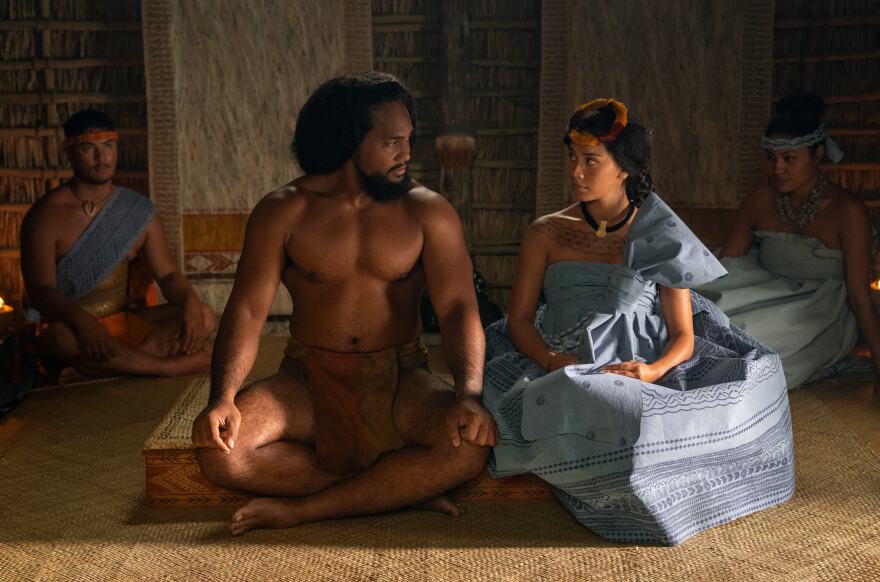The new historical drama “Chief of War” has been breaking down narratives in film and television that have often depicted Pacific Islander women as damsels in distress, by showcasing its characters as warriors who don’t need saving.
Pacific Islander women have long been fixtures in South Seas Cinema, a genre of film from the early 20th century that focused on island cultures in the South Pacific, often with a romanticized perspective.
They were exoticized and hypersexualized, with some films having non-Indigenous people appropriate their roles by wearing coconut bras and falling in love with Western men who stumbled upon their island.
Then, in the 21st century, some films excluded Pacific Islander women from playing roles, such as the 2015 film “Aloha,” in which Emma Stone portrayed a character of Hawaiian, Chinese, and Swedish descent.
But there has been a push for Pacific Islander representation in movies, shows, and documentaries, with many Indigenous-made films originating in New Zealand.
“It's a beautiful thing to really see our wāhine around the world be truly represented as they are,” said Māori actress Te Ao o Hinepehinga. "Not as this Hollywood trope that we fell into the habit of.”
Hinepehinga plays Kaʻiana’s wife Kupuohi — also known as Kekupuohi — who accompanies him on the battlefield between the Hawaiian Islands. She’s renowned as a warrior and able to fight alongside the most skilled fighters across the islands.
Hinepehinga initially auditioned for Kaʻahumanu, Kamehameha’s favorite wife. But as she read the script, she said Kupuohi caught her attention.
“Kupuohi just sung to me,” she said. “As soon as I read her, I just went, ‘That is our wahine.’”
“Chief of War,” co-created by Thomas Paʻa Sibbett and Jason Momoa, features a blend of historical figures and fictional characters, depicting women as warriors who utilize slings and daggers in battle. Additionally, they played a crucial role in decision-making when the Hawaiian Kingdom was divided.

Kaʻahumanu, played by Tongan actress Luciane Buchanan, was a pivotal figure in Hawaiian history. She was known for her political leadership and for abolishing the ancient Hawaiian kapu system, which forbade men and women from eating together.
Buchanan said she doesn't take her role lightly.
“It’s not a small character at all, and she’s so loved and admired,” she said. “I’ve never been in a position where I’ve played a real person before.”
When asked about their favorite films growing up, many of the “Chief of War” actresses cited the New Zealand cult classic “Once Were Warriors” because of the strong female lead, Beth Heke, played by Rena Owen.
In fact, the showrunners have said that the “Chief of War” fictional character Heke, played by Kaua‘i actress Mainei Kinimaka, was named after Beth Heke.

While the nine-episode season on Apple TV+ features some fictional characters, Samoan actress Sisa Grey brings complexity to the show. Grey plays Vai, an outcast whom Kaʻiana met in the Philippines.
“That character is power,” she said. “That character shows a woman who’s been scorned by her country and feels like she’s lost her identity. But coming back, she handles herself in a way that elevates not only herself but also what she lost.”
Grey said she has to hustle as a Samoan woman in Los Angeles, but is now seeing a greater abundance of Pacific Islanders in the film industry.
“Now to have so many others alongside, I’m like, ‘Thank God,’” she said. “Now we've got people to put into these stories to tell our stories. You can’t do a film with just one Polyensian.”
HPR's new podcast, "Feathers and Fire," recaps and discusses each episode of "Chief of War," and dives into the real history behind the show.





